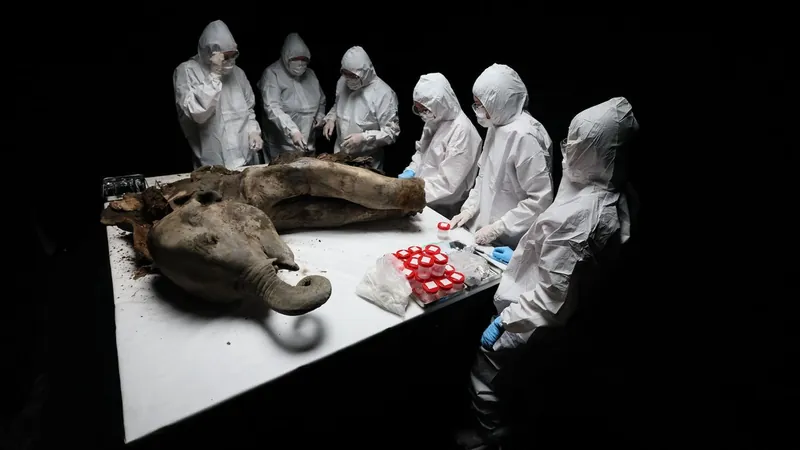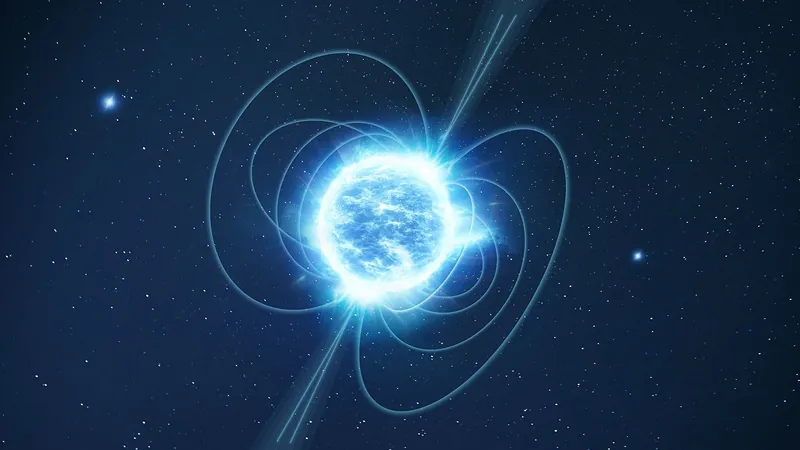
Discovery of 130,000-Year-Old Mammoth Calf Reveals Unprecedented Insights into Prehistoric Life
2025-04-07
Author: Charlotte
Introduction
In a stunning revelation, Russian scientists have successfully conducted a necropsy on a remarkably preserved 130,000-year-old baby mammoth, nicknamed "Yana," discovered within the icy grip of Siberian permafrost. The mammoth, which was initially unveiled in late 2024, has been hailed as the best-preserved specimen of its kind ever unearthed, boasting a front body that closely resembles a baby elephant.
The Necropsy Process
Researchers performed the necropsy, akin to an autopsy for animals, at the Mammoth Museum at North-Eastern Federal University in Yakutsk. The procedure, which lasted several hours in late March, offered a unique window into ancient ecosystems. "This necropsy is an opportunity to look into the past of our planet," explained Artemiy Goncharov, the head of functional genomics and proteomics of microorganisms laboratory at the Institute of Experimental Medicine in Russia.
Yana's Preservation and Discovery
Yana’s entombment in permafrost for millennia was interrupted by climate change, which gradually thawed the region, exposing her remains. Interestingly, while her front body began to slide down a cliff, her hindquarters remained firmly embedded in the earth, preserving her in the permafrost.
Remarkable Findings
The most astonishing detail from the necropsy is the scent emanating from Yana’s carcass, described as a peculiar blend of "fermented earth and flesh." Measuring 3.9 feet (1.2 meters) tall at the shoulder and weighing nearly 400 pounds (180 kilograms), Yana’s head and trunk were found intact, giving researchers valuable insight into her physical structure. They also located milk tusks, which fell out as she matured, similar to how humans lose baby teeth.
Internal Analysis
The preservation of Yana's internal organs, including a partially intact digestive tract, has allowed scientists to analyze remnants of her last meal. "We can see that many organs and tissues are very well preserved," Goncharov noted, adding that this could provide crucial information about her diet and environment.
Bacterial Insights
Researchers are particularly keen to identify unique bacteria from Yana's remains, which could illuminate the flora and fauna of her time, strengthening our understanding of ancient ecosystems. The findings are also expected to shed light on the interaction between ancient and modern microorganisms, paving the way for groundbreaking research in evolutionary biology.
Conclusion
Although scientists have yet to pinpoint the cause of Yana's early demise, they can confirm that modern humans played no role in her death, as Homo sapiens did not inhabit Siberia until at least 30,000 years after her passing.
This extraordinary discovery opens a captivating chapter in the story of Earth's history, showcasing not only the survival of life in extreme conditions but also the delicate balance of ecosystems that existed long before humanity walked the planet. As researchers continue to unravel the mysteries of Yana, the implications of her discovery could potentially reshape our understanding of prehistoric life and the natural world.









 Brasil (PT)
Brasil (PT)
 Canada (EN)
Canada (EN)
 Chile (ES)
Chile (ES)
 Česko (CS)
Česko (CS)
 대한민국 (KO)
대한민국 (KO)
 España (ES)
España (ES)
 France (FR)
France (FR)
 Hong Kong (EN)
Hong Kong (EN)
 Italia (IT)
Italia (IT)
 日本 (JA)
日本 (JA)
 Magyarország (HU)
Magyarország (HU)
 Norge (NO)
Norge (NO)
 Polska (PL)
Polska (PL)
 Schweiz (DE)
Schweiz (DE)
 Singapore (EN)
Singapore (EN)
 Sverige (SV)
Sverige (SV)
 Suomi (FI)
Suomi (FI)
 Türkiye (TR)
Türkiye (TR)
 الإمارات العربية المتحدة (AR)
الإمارات العربية المتحدة (AR)